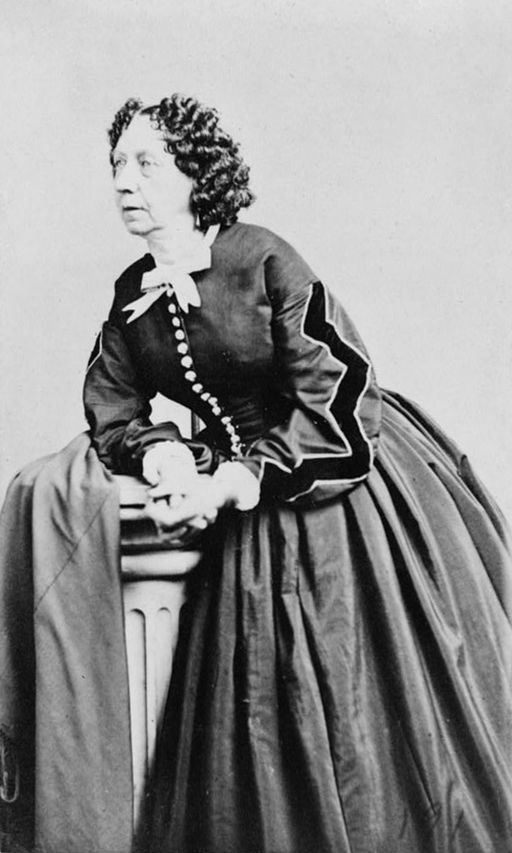Fern, Fanny (pseudonym) (1811 - 1872)
Last edited by Floor_Toebes on May 27, 2025, 2:57 p.m.
| Short name | Fern, Fanny (pseudonym) |
|---|---|
| VIAF | http://viaf.org/viaf/54174466 |
| First name | Sarah Payson |
| Birth name | Willis Parton |
| Married name | Parton, Farrington, Harrington Eldredge |
| Alternative name | Fanny Fern — Sarah Harrington Eldredge — Sarah Farrington |
| Date of birth | 1811 |
| Date of death | 1872 |
| Flourishing | - |
| Sex | Female |
| Place of birth | Portland (Maine) |
| Place of death | New York (New York) |
| Lived in | United States |
| Place of residence notes |
| Mother | |
|---|---|
| Father | |
| Children | |
| Religion / ideology | |
| Education | |
| Aristocratic title | - |
| Professional or ecclesiastical title | - |
| Parton, James | 1856-1872 | Married |
| Farrington, Samuel P. | 1849-1853 | Divorced |
| Harrington Eldredge, Charles | 1837-1845 | Widowed |
| Profession(s) | |
|---|---|
| Memberships | |
| Place(s) of Residence | United States |
Author of
| receptions | circulations | |
|---|---|---|
| Fern leaves (1853) | 10 | 1 |
| Ruth Hall, a domestic tale of the present time (1855) | 5 | 0 |
| Rose Clark (1856) | 7 | 0 |
| *Grepen uit het leven (1869) | 4 | 1 |
| My new storybook for children (1872) | 1 | 0 |
| *Veelzijdig ontwikkelde vrouwen (1874) | 1 | 0 |
| *Vrouwenbeelden (1880~) | 1 | 1 |
| *Kijkjes in de wereld | 4 | 1 |
| *Uit de nalatenschap van Fanny Fern | 3 | 0 |
| *Several shorter texts (to be specified later) | 1 | 0 |
Editor of
-Copyist of
-Illustrator of
-Translator of
-Circulations of Fern, Fanny (pseudonym), the person (for circulations of her works, see under each individual Work)
| Title | Date | Type |
Receptions of Fern, Fanny (pseudonym), the person
For receptions of her works, see under each individual Work.
| Title | Author | Date | Type |
|---|---|---|---|
| Unknown photographer, portrait of Fanny Fern, ca. 1866. | 1866 | is portrait of |
MENTIONED IN:
- Buck, Guide to women's literature, 1992: "became a writer to support herself and her children on the death of her first husband [..] worked her way from low-paid piece-work for local papers to become a highly paid columnist for the New York Ledger and a sought-after contributor in a range of periodicals".
- Spiller
NB apparently not translated into French (no translations in Cat BnF) (SvD jul08)
Elizabethada Wright
Siggin and Singing: The Case of a Nineteenth-Century American White Woman Signifyin(g)
Recently, Mikhail Bahktin's concept of "double-voiced discourse" has become increasingly important to scholars who use it to describe the ways that oppressed people deliver subversive messages. For example, Linda Hutcheon has observed ways women use irony, a kind of double-voiced discourse, to de stabilize their opposition, and Henry Louis Gates has studied the African-American strategy of Signification, which thrives on its powerful play with language.
While Signification has been studied as a rhetorical strategy of African Americans, some of the double-voiced discourse utilized by white American women, especially during the nineteenth century, has strong similarities to Signifyin(g). Seeing women's discourse as play that serves a purpose, that teaches but does not preach, and that thrives on the unexpected, we may better understand much of the dismissed humorous work of nineteenth-century women. Working toward this end, this paper analyzes the newspaper columns of the nineteenth-century writer Fanny Fern, a woman whose humor has been little studied, to draw connections between the rhetorical strategies in her work. Signification can better help us understand both the strategies of some nineteenth-century white women and the similarities between the situations of African Americans and women.
Contribution to The Second Biennial Feminism(s)
and Rhetoric(s) Conference "Challenging Rhetorics: Cross-Disciplinary Sites of Feminist Discourse" (1999)
(SvDijk sept. 2003)
KLK 1904
